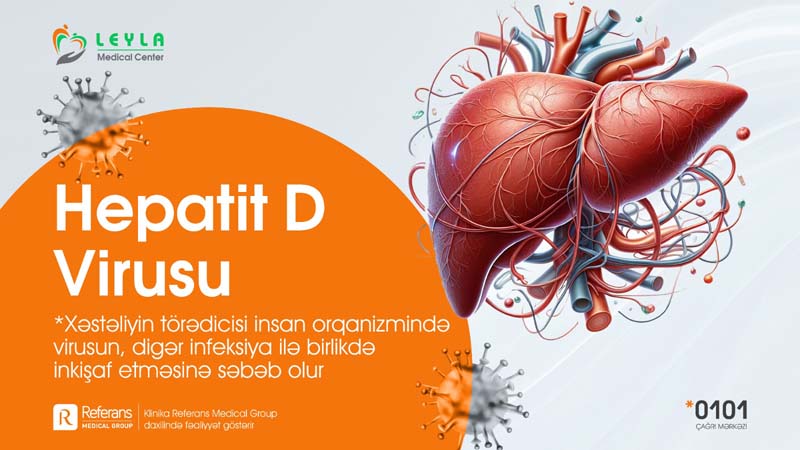
Hepatitis D Virus
- Hepatitis D is a viral liver disease. The causative agent not only causes the virus to develop in the human body but also contributes to the occurrence of other infections. Usually, the secondary infection is the Hepatitis B virus, which worsens the course of the disease.
- Transmission:
- The disease is transmitted through the use of needles that have been used by an infected person. In some cases, it can also be transmitted through sexual contact or from mother to fetus.
- Cases of infection:
- • People who have received donor blood transfusions (in 1–2% of cases) may be carriers of the Hepatitis D virus. Repeated blood transfusions increase the risk of infection.
- • People who use needles that were previously used by others are also at risk of infection with both Hepatitis B and D viruses.
- • Sexual contact with a carrier of the Hepatitis D virus is one way the disease is transmitted.
- • If a woman infected with Hepatitis D becomes pregnant, it may lead to the birth of an ill child.
- • People who get tattoos or undergo acupuncture are also at risk of contracting Hepatitis D.
- Hepatitis D often occurs alongside Hepatitis B virus infection. Symptoms of the disease usually develop within 1 to 6 months after infection. Hepatitis D is considered a severe infectious disease. Diagnosis is confirmed by laboratory tests and biochemical blood indicators.
- Leyla Medical Center – Your health is our priority!
- Address: Khatai District, Yusif Safarov Street, 19
- Additional information: *0101
- WhatsApp support service: +994 55 455 0111
- ©️ Referans Medical Group
19 February 2024
Loading...